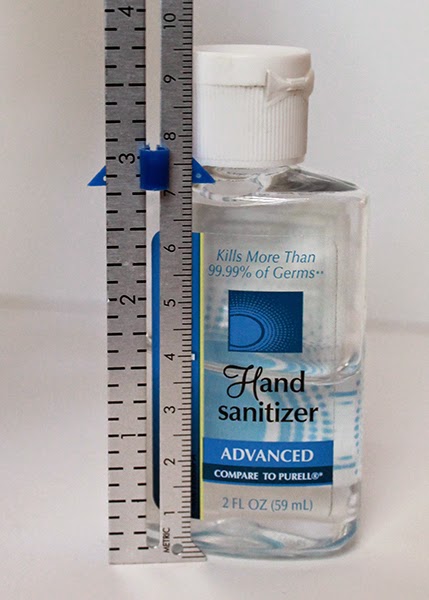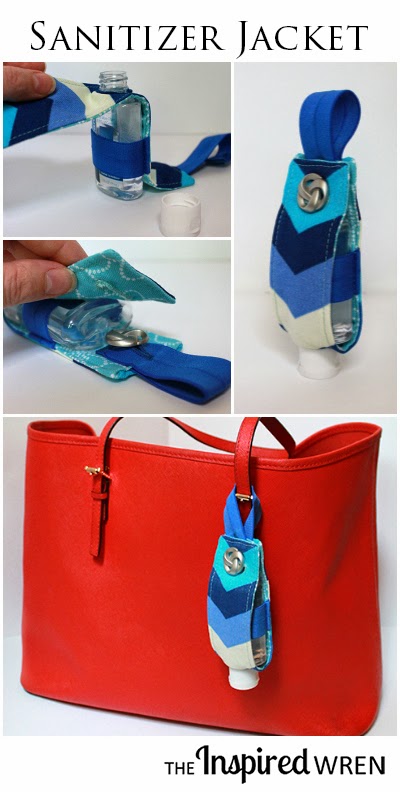Always have sanitizer at hand perfectly coordinated with your accessories when you sew up this Hand Sanitizer Jacket.
It's that time of the year, when the Halloween decorations are still up but the seasonal music station is already playing the Christmas tunes. That time of the year when you realize the gift list is longer than you thought (how many teacher's does The Peanut have?!) and your grand plans of going all hand-made are already slipping away before the turkey has even been purchased. I'm here to help with a simple, seriously quick little project that is perfect for teachers, new moms, workplace grab bags, and stockings everywhere. Pull some indoor/outdoor home dec out of the remnant bin, grab a few metal buttons and coordinating elastic, then pull up a chair and follow along step by step to sew a custom jacket for your travel hand sanitizer. You'll have a dozen presents checked off your list before the last leaf falls.
If you're like me and prefer to print out the tutorials you use, you can download the four-page PDF file here for just $1.99! Otherwise read on for a full tutorial how to sew a Hand Sanitizer Jacket -- always have sanitizer at hand perfectly coordinated with your accessories.
MATERIALS
|
*FABRIC
I created this project to use scraps of indoor/outdoor canvas I had on hand. The canvas holds up beautifully attached to a tote/diaper bag that sees a lot of use. I will assume this project can be made of other tough fabrics (corduroy and denim come to mind) without alteration. However, if you choose to use quilt-weight cotton I would add a medium–heavy-weight iron-on interfacing to each piece, or insert a medium–heavy-weight sew-in stabilizer between Steps 8 & 9 for durability. I’ve only made this with canvas so I’d love to hear about & see your results with other materials!
I created this project to use scraps of indoor/outdoor canvas I had on hand. The canvas holds up beautifully attached to a tote/diaper bag that sees a lot of use. I will assume this project can be made of other tough fabrics (corduroy and denim come to mind) without alteration. However, if you choose to use quilt-weight cotton I would add a medium–heavy-weight iron-on interfacing to each piece, or insert a medium–heavy-weight sew-in stabilizer between Steps 8 & 9 for durability. I’ve only made this with canvas so I’d love to hear about & see your results with other materials!
NEEDLES
Don’t forget to use the correct needle for your chosen fabric on your sewing machine. If you are working with canvas fabric as seen here use a non-dull, Universal- or Sharp-Point needle, size 18. When sewing on just the elastic (Steps 2 & 3), a Ball-Point, size 14 needle helps the stitching go smoother, but isn’t necessary. Just remember to change back to the appropriate needle for your fabric weight for the remainder of the project. [ASIDE: This project comes out horribly with a dull needle (guess how I know). How used and dull are your needles?]
Don’t forget to use the correct needle for your chosen fabric on your sewing machine. If you are working with canvas fabric as seen here use a non-dull, Universal- or Sharp-Point needle, size 18. When sewing on just the elastic (Steps 2 & 3), a Ball-Point, size 14 needle helps the stitching go smoother, but isn’t necessary. Just remember to change back to the appropriate needle for your fabric weight for the remainder of the project. [ASIDE: This project comes out horribly with a dull needle (guess how I know). How used and dull are your needles?]
 |
| I've made this jacket in the past with 3/4" braided elastic; here I've used 1" fold-over-elastic. |
CUTTING & MARKING
a. Cut your coordinating fabrics to size (each 2 ½" x 10"). Decide which will be the outer Shell fabric and which will be the inner Lining fabric.
b. Working right side up, mark the midline across the width of both the Shell and Lining fabrics. Set the Shell fabric aside.
c. Mark the Elastic Belt position 1 5/8" up from the marked midline.
d. On the same end/side as the Elastic Belt markings, mark the short end with two dots—this will be the handle end left open for turning.
 |
| Cut and mark the fabric accurately. |
CONSTRUCTION
1. Prep the elastic.* Working just over 3" from the end of the elastic, stitch the entire width of the elastic with a satin stitch (a wide, short (0–1) stitch); tie off your threads. Now cut the elastic very close to the stitching, being careful not to cut the stitched threads, so that you have one 3" piece of elastic with no stitching (the Elastic Belt) and one 5" piece of elastic with one satin-stitched finished edge and one raw edge (the Elastic Handle). Set aside the 3" piece.
*ALTERNATE FINISHING: If you’re not comfortable with the satin stitch edge, you can fold the elastic over ¼" two times and stitch with a straight seam. Your goal is two pieces of elastic: one 3" piece (the Elastic Belt) with both edges raw and one approximately 5" piece (the Handle) with one finished edge and one raw edge
2. On the 5" Elastic Handle, at the same end as the finished edge, insert a button hole to fit your button. It should be parallel to the long edge of the elastic and the end should touch the satin stitching/finished edge. Set all the elastic aside and remember to change your needle if you used a Ball-Point for the elastic.
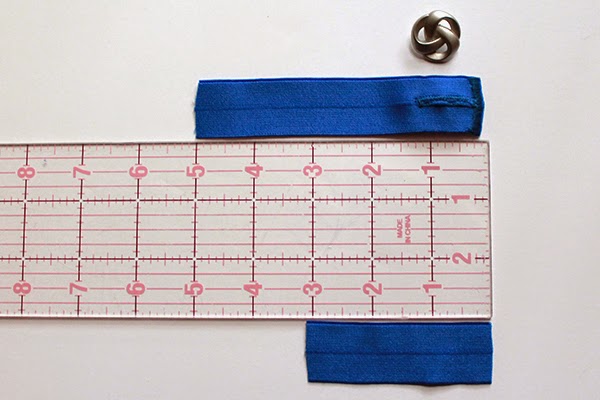 |
| Steps 1-2: Prepare the elastic. |
3. Iron the interfacing to the wrong side of the Shell fabric. Set aside.
4. Matching the raw edges, pin the 3" Elastic Belt to the right side of the Lining fabric aligning the bottom of the elastic with the marked Elastic Belt position. Pin down the extra bulk of elastic in the middle so it stays out of the seam allowance.
 |
| Step 4: Pin the Elastic Belt in place. |
5. Align the Shell fabric and the Lining fabric. Pin with right sides together, sandwiching the 3" pinned-in-place Elastic Belt in between the two. With a ¼" seam allowance, sew three sides of the pinned fabric leaving the short edge with the marked double dots open. You should catch the edges of the Elastic Belt in the seam as you sew.
6. Clip the sewn corners and turn the fabric right side out; use a dull point tool (like a chopstick or dull pencil) to push the corners out. Press the entire piece flat.
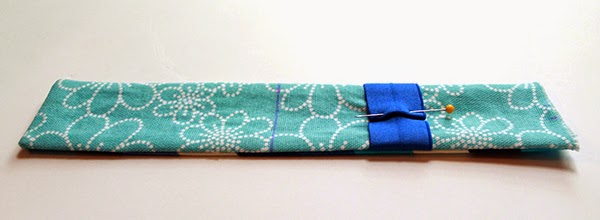 |
| Step 6: Turn the jack right side out and press. |
7. Fold the raw edges at the open end of the fabric into itself approximately ¼"–½" (but no more than ½")*; press in place. Insert the unfinished/raw end of the Elastic Handle approximately ½" in and center it along the short edge. Pin the seam closed with the elastic in place.
*NOTE: If you’re paying attention this now means after precise cutting & marking, your mid-line may no longer be a true mid-line. I know, but it works so go with it!
8. Beginning at marked mid-line, top stitch* ⅛" from the edge around the entire piece (I prefer to use a longer stitch (3–3.25) when topstitching); as you stitch you will again catch the edges of the 3" Elastic Belt (see picture) and you will close the open short-end seam also catching the one end of the Elastic Handle (the finished/button hole end of the Elastic Handle will still be free). You should finish stitching where you started; pull the threads through to the Lining-side and tie off.
*NOTE: Normally I prefer to top-stitch from the outer side of a piece or garment (outer/Shell-side up), however because of the Elastic Belt, I find it is easier to stitch this piece with the inner/Lining-side up.
 |
| Step 8: Top-stitch all four sides of the jacket, closing the opening and catching the Elastic Handle in place. |
9. At the marked mid-line, insert a 1½" button hole centered across the 2" width of the fabric—basically from top-stitching to top-stitching. Be sure to orient the button hole across the width of the piece (not parallel along the length). Yes, it will feel like it’s practically the entire width of the piece.
10. Working on the opposite end from your Elastic Handle and down ¾" from the end, insert a button hole to fit your button. This will most likely be smaller but should also be inserted across the width (not the length) of the piece.
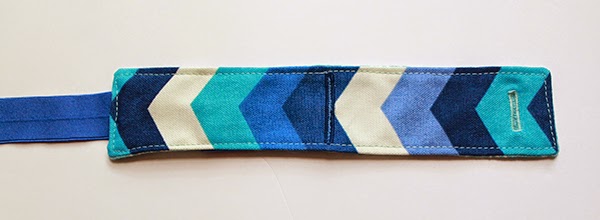 |
| Steps 9-10: Insert the button holes. |
11. Fold the entire piece in half at the mid-line button hole and mark the button placement on the inner Lining. Sew your button in place. If you’re using a button with a shank, just sew it on nice and tight. If you’ve chosen a button without a shank, insert a wooden matchstick (or similar width object: a single tine of a fork, maybe) between your fabric and your button, pull it out when you’re done stitching the button in place; before tying it off, wrap the thread a couple of times around the stitches in the space between the button and the fabric where you removed the matchstick—the matchstick will help you leave enough height in the thread-wrap shank to accommodate the bulk of the elastic and layers fabric when you button it all together.
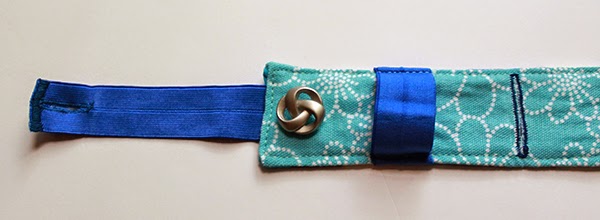 |
| Step 11: Add the button. |
YOU'RE DONE!
Now put it all together:
a. Insert your hand sanitizer bottle through the Elastic Belt (you can go ahead and unpin that now if you haven’t already) with the bottle cap aiming for the mid-line button hole.
b. Push the top through the button hole—you can worry it in as I did the first time, or just be smart about it and remove the cap (being careful not to spill the sanitizer), push the neck completely through the button hole making sure all the fabric is below the bottle’s screw-threads entirely, and then replace the cap tightly.
c. Wrap the Elastic Handle around your object of choice—bag handle, stroller handle, handle on your desk at work—then button the elastic in place.
d. Now button the front of the Jacket closed on the same button as the elastic.
When the bottle empties you can replace it with a new one or just re-fill your original bottle. And you can always remove the bottle and throw the Jacket in the washing machine to keep it disinfected like your sanitized hands.
This Hand Sanitizer Jacket is an excellent scrap buster. Once you get the hang of it, you can bang out half a dozen or more in one afternoon. Pair it with a Pocket Tissue Cover and throw both into a Lined Canvas Tote and you'll have a lovely coordinated gift set in one afternoon.
If you sew one of these Jackets in any variation I'd love to see it. Be sure to use #TIWhandsanitizerjacket and @theinspiredwren on Instagram and Facebook!
PS -- Thanks for reading to the end. Of course, now you need a bag to hang your new Hand Sanitizer Jacket on! Try the ever-popular, classic Lined Canvas Tote, the all cotton, self-lined 3-10 Tote, or the quick-sew Shortcut Quilted Tote. ~Ren
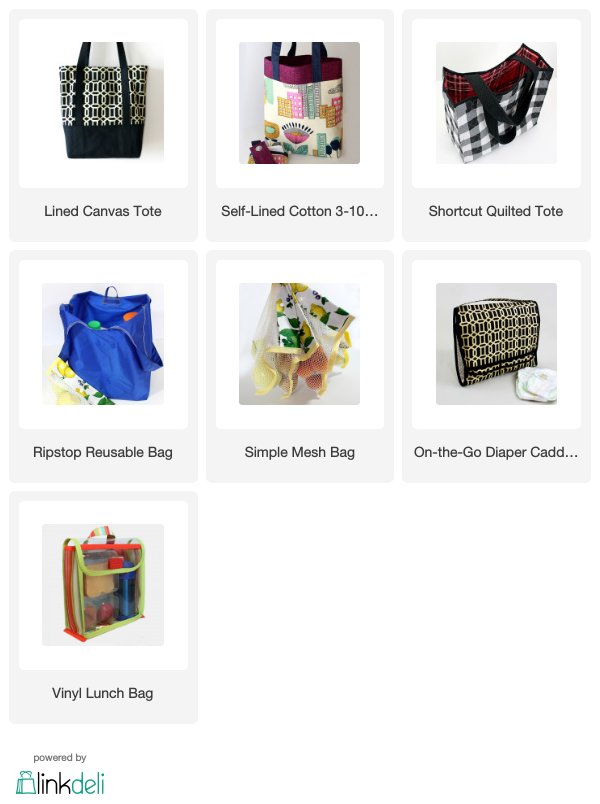
Ren Murphy writes for The Inspired Wren.
___________________________________________________
You should really see all that goes into each project!
From my marathon sewing sessions, to all that I do when I #shouldhavebeensewing, catch daily updates on Instagram (and Flickr) of works-in-progress. Get that behind the scenes view you’re looking for, and sneak peeks of First Tuesday Tutorials, too.
___________________________________________________
The Inspired Wren is a participant in the Amazon Services LLC Associates Program, an affiliate advertising program designed to provide a means for sites to earn advertising fees by advertising and linking to amazon.com.



